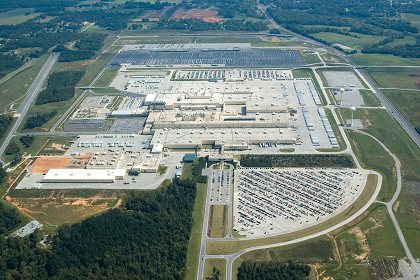|
|
 |
 |
 |
 |
| |
Digitalization and brownfield facilities – can these fit together?
6
March
2019
|
| |
 Today’s plant automation systems provide transparent monitoring of system status, plus tools such as condition monitoring or predictive maintenance – all help to reduce unscheduled downtime. However, what about brownfield installations with legacy equipment? It is not uncommon to see plant equipment still working after 30 years. Can these systems be integrated into value chains so that the requirements of modern production can be met? We all prefer production and maintenance decisions to be made based on effective monitoring rather than fixed schedules or guesswork.
Today’s plant automation systems provide transparent monitoring of system status, plus tools such as condition monitoring or predictive maintenance – all help to reduce unscheduled downtime. However, what about brownfield installations with legacy equipment? It is not uncommon to see plant equipment still working after 30 years. Can these systems be integrated into value chains so that the requirements of modern production can be met? We all prefer production and maintenance decisions to be made based on effective monitoring rather than fixed schedules or guesswork.
Certainly, the requirements for digitizing such systems are demanding: for most brownfield systems, there was no OPC UA available of during the original installation. There probably won’t even be an Ethernet interface. But, there are solutions to collect a lot of system data that can be used to improve overall system efficiency.
For example, sensors can be connected to the power supply to help ensure efficient energy management. That information, in conjunction with the recording of production machinery start and stop times via decentralised I/O, can provide essential comparative data. Cost-effective sensors and/or camera systems that can register and record pass/fail product data can also be added at different points on the production line.
Users can monitor their plants condition by implementing a Smart Condition Monitoring system: here, a vibration sensor is attached to rotating machinery such as fans, gearboxes and motors. It is not necessary to access or change the machine control system. The sensor is simply connected via a Power-over-Ethernet cable. This easy-to-integrate solution has been developed by Mitsubishi Electric in conjunction with its partner Schaeffler, a member of the e F@ctory Alliance network.
Digitalization of brownfield systems: when and where to start
Older systems, while reliable, will almost certainly be more vulnerable to failure simply by virtue of their age. Yet, the savings that can be made and the ROI that can be achieved by making repairs and reducing downtime in existing equipment can be better and realised faster than investing in new machines. Furthermore, if a brownfield automation system is directly linked to the production and value chain, it should also be digitally integrated.
The measures which are easiest to implement should be looked at first. These include energy management and the recording of machine status data to provide an insight into overall system efficiency. At the same time, condition monitoring should be implemented as the basis for predictive maintenance to reduce downtime.
The more data that can be collected, the more opportunities there are for system optimisation through real-time edge or cloud analysis. But what is important is to examine the possibilities for individual systems, taking into account the return on investment in each case. Certainly, though, in many cases old brownfield installations can be made fit for a digital future with minimum effort. Companies will benefit from more transparency and flexibility of their production facilities, which is a prerequisite in order to remain competitive on a global scale. Time to market and the ability to produce individualised products cost-effectively will depend on the degree of digital automation. It is therefore a question of ‘when’ not ‘if'.
Next level: artificial intelligence within manufacturing
Companies that are implementing changes now for the digitalization of their production will also be in the best position to reap the benefits of emerging technologies such as artificial intelligence (AI). These technologies, which are yet to mature, will build on the key elements of analysing smart data and big data to optimise production.
Analysis of smart data and big data enables better production decisions to be made, and the techniques of deep learning and machine learning are emerging to automate the planning of production actions. This lays the foundations for the broader use of AI to achieve maximum flexibility in volatile markets. In this way individualised products can be produced for the same price as mass-produced products. Smart data, big data and the analysis of these in conjunction with AI will support users to realise market requirements.
Time to market is vital, so machine changeovers for new products must be as fast as possible and those machines have to be able to produce perfect products right from the start of the production run. This will get products to customers quickly and optimises resource efficiency.
For more information, please contact:
Monika Torkel
Mitsubishi Electric Europe B.V.
Factory Automation European Business Group
Mitsubishi-Electric-Platz 1
40882 Ratingen
Germany
Tel: +49 (0)2102 486-2150
Fax: +49 (0)2102 486 7780
Email: Monika.Torkel@meg.mee.com
Web: eu3a.mitsubishielectric.com/fa |
|
|
| |
FactoryEquipment.com are not responsible for the content of submitted or externally produced articles and images.
Click
here to email FactoryEquipment.com about any errors or omissions contained within this article. |
| |
|
 |
|
 |
 |
|